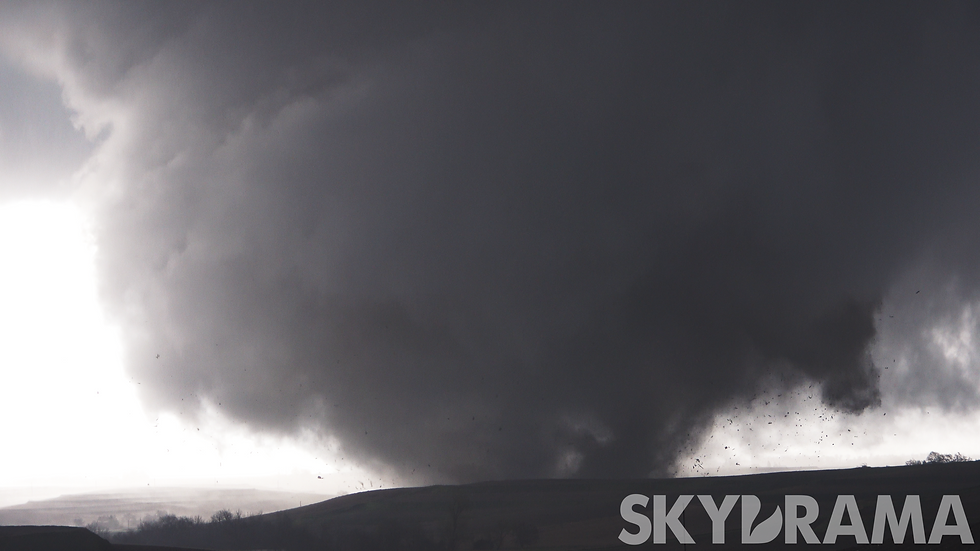Did A Tornado Plant Corn in Minden, Iowa?
- Andrew Pritchard

- Sep 4, 2024
- 3 min read
I've been observing severe thunderstorms and the damage they cause in the American Midwest for 20+ years, and I've never seen, or heard of this happening.
On April 26th, 2024, Colin Davis and I sat just north of Minden, Iowa as a massive tornado reached peak intensity at the exact wrong time as it moved over the south and east part of Minden, destroying homes and businesses across several blocks.

In July my family was headed west for vacation and I decided to detour off Interstate 80 and check on the recovery in Minden. I mostly saw what I expected to see; a resilient Midwestern town that reflected a typical hot summer afternoon in rural America on one side, while the other side was a smattering of homes that'd been repaired, some that were still covered in blue tarps and exposed lumber, and a few vacant lots where homes that were beyond repair once stood along with a few slabs where homes were swept clean off of their foundation by the tornado.
As we drove through the tornado path I noticed something I definitely did NOT expect to see. In the yards and other grassy areas surrounding homes and businesses that were destroyed by the tornado there were corn plants sprouting all over the place. Crazy enough, the exact same week I found these chest-high corn plants growing in Minden, the same thing was photographed in nearby Greenfield, Iowa which was hit by an EF-4 tornado on May 21st.
My first and only real thought was... how? How did we arrive here? I have only a few guesses, and they're exactly that - guesses.
Did the tornado track through freshly planted fields, lofting the seeds from beneath the soil and depositing them in Minden? At first glance this seems possible - the tornado occurred in late April which is right in the middle of the typical spring planting window in the Midwest. The tornado was strong to violent, and there are plenty of instances of ground scouring in significant tornadoes. The more I think about it though, the more this feels too perfect. Especially when you consider the same thing happened in Greenfield with a tornado that occurred 4 weeks later. Both of these tornadoes would have had to impact freshly planted fields at the perfect time to scoop up seeds that had not established themselves only to have them nestle into the ground in town and emerge several weeks later.
Did the tornado hit a farm or facility that had seed stored on site, lofting the seeds and depositing them across town as the tornado tracked through? There were several agriculture and greenhouse supply shops destroyed on the south side of Minden. Still, while this seems plausible it would be a wild coincidence to have the same thing occur in separate instances during the same spring.
Maybe this is just a normal thing in small towns across the Cornbelt where homes neighbor row crop fields. Perhaps seeds are scattered across town through regular high-traffic agricultural activity in these areas and the only reason they're emerging and maturing this year is because these lawns were never mowed after the destructive tornadoes. In this case, which kind of seems the most likely to me in some weird way, it's probably also true that this kind of tthing has definitely happened before and perhaps is only just now being shared on social media. The unfortunate truth about today's rapid news cycle is that these communities can be partially wiped off the map by a destructive tornado and be old news a week later, even though the impacts and recovery are going on for weeks, months, and years.
At any rate, add this to list of bizarre things that tornadoes have done that defy logic or past experience. I'll definitely be sharing this story as I travel around this winter speaking at ag meetings just looking for any and every theory as to why these corn plants were thriving in Minden (and Greenfield) following destructive tornadoes in the spring.
Here's my video of the entire Minden, Iowa tornado sequence on April 26th, 2024:
And here's my Storm Observation Vlog covering the entire tornado outbreak:









